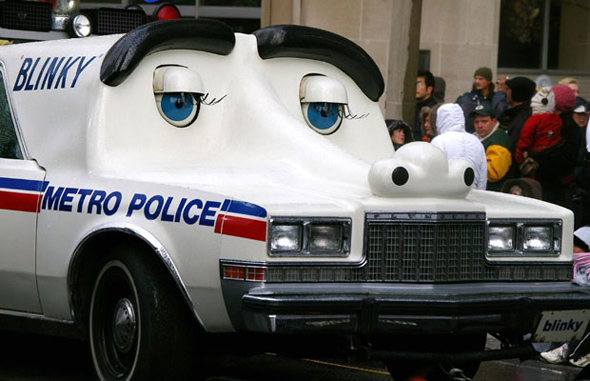November 2016
Yup & Nope: A one-minute look at brands in real life. Who’s doing it right and who’s doing it all wrong.
Toronto Police Service
If it has your name on it, it represents your brand. Even cop cars.
This was clearly a reminder that Toronto Police Service’s Chief Mark Saunders needed to hear. Chief Saunders recently made a seemingly arbitrary and independent decision to change the design of some of the Toronto Police Service’s (TPS) vehicles. The common white vehicles were being replaced with dark grey ones.
People didn’t like the new look, and they made their opinions known. The new vehicles were described as “mean looking”, “militaristic”, and “stealthy”.
Toronto Star writer Shawn Micallef summed it up this way: “What once visibly represented the ideal of ‘To Serve and Protect’ now says stealth, aggression and surveillance.”
Chief Saunders’ obvious excitement about the new vehicles was short-lived.
It turns out, Chief Saunders didn’t consult his TPS Board or stakeholders. When asked why he decided to make the change, he said he had not given it any “deep thought”.
Brand misalignment
Although they didn’t use the term ‘brand misalignment’ like I would, the media and the public knew something was off.
Not long after the announcement of the new vehicles, Toronto City Council passed a motion that requested the TPS Board not buy any new cars pending further review. It also required the Board to clarify the reason for the change, and to do an independent study and community consultations before any future design changes.
The word ‘community’ appears six times in TPS’s mission and values. Its mission, in part, is to deliver services “in partnership with our community”. The organization’s name is Toronto Police Service, not Force. Its tagline is ‘To Serve and Protect’.
In a nutshell: the themes of service, partnership, and community do not come through in the new vehicle design, or the process it took to produce it. The new design seems to be giving people the perception the TPS is surveilling versus serving its citizens.
3 lessons
Any change to a brand touchpoint will cause a reaction, which can be huge or minuscule, positive or negative. There’s nothing wrong with changing your brand design or an individual touchpoint. But there is something wrong with doing so absent of any insight or contemplation of your overall brand and your stakeholders.
There are 3 lessons to remember from the TPS’s brand misstep:
- Every touchpoint is a representation of your overall brand.
- Design always evokes feelings and perceptions. If the feelings and perceptions a new design evokes don’t fit your brand, you have a problem.
- A brand is bigger than one person’s personal preferences. It’s risky to manage it as if that was the case.
I’m sure these lessons are now apparent to Chief Saunders. Purchases of the new cars are on hold and he’ll have to explain a lot of things and involve a lot of people before he can try again. Hopefully the TPS and all of us who watched this play out will remember these lessons the next time we want to “just freshen up” or “modernize” one of our brand touchpoints.

